Tell people you’re planning a trip to Palestine, and you might be met with a couple of incredulous looks. Fair enough–this area has been embroiled in Middle Eastern tensions for decades, caught up in political chaos over territories, borders, settlements and annexations that shows no sign of being resolved any time soon.
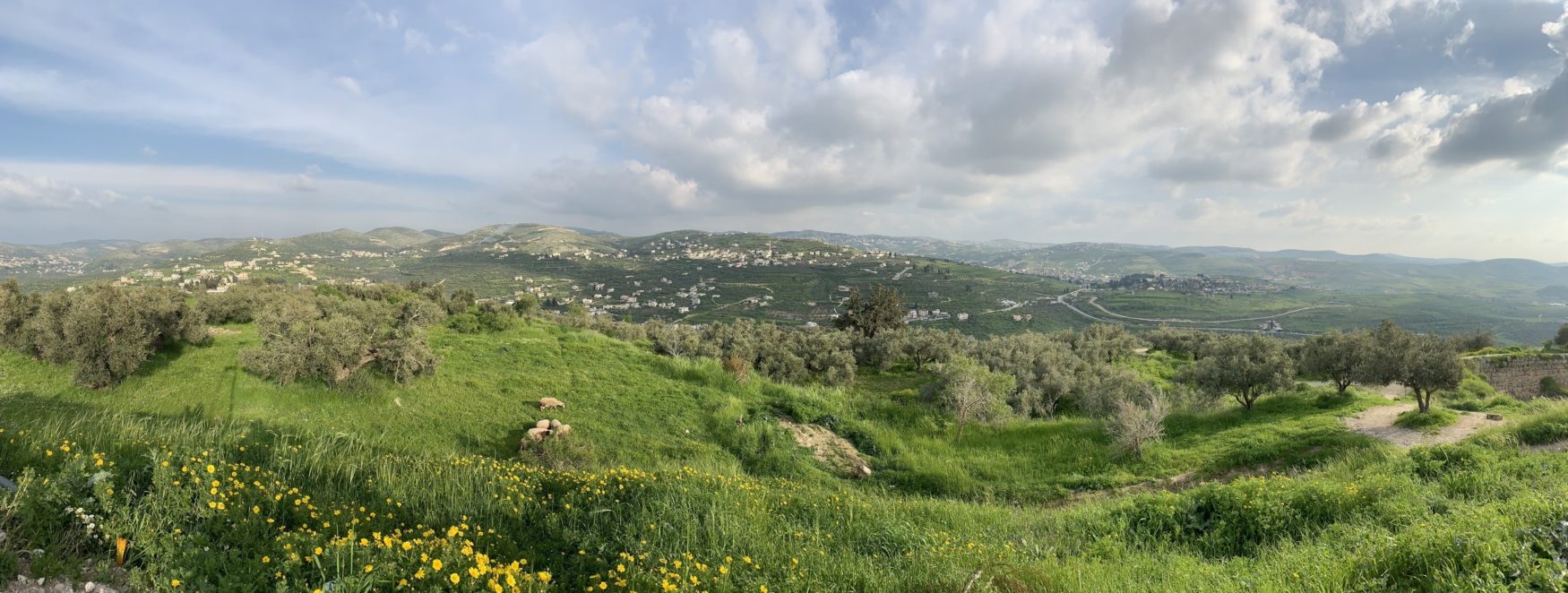
But by getting behind the headlines and taking an opportunity to meet the people most affected by its conflict with Israel, you’re sure to leave with a new perspective about their struggles and hopes for peace…and likely even more questions than answers, given the complicated circumstances.
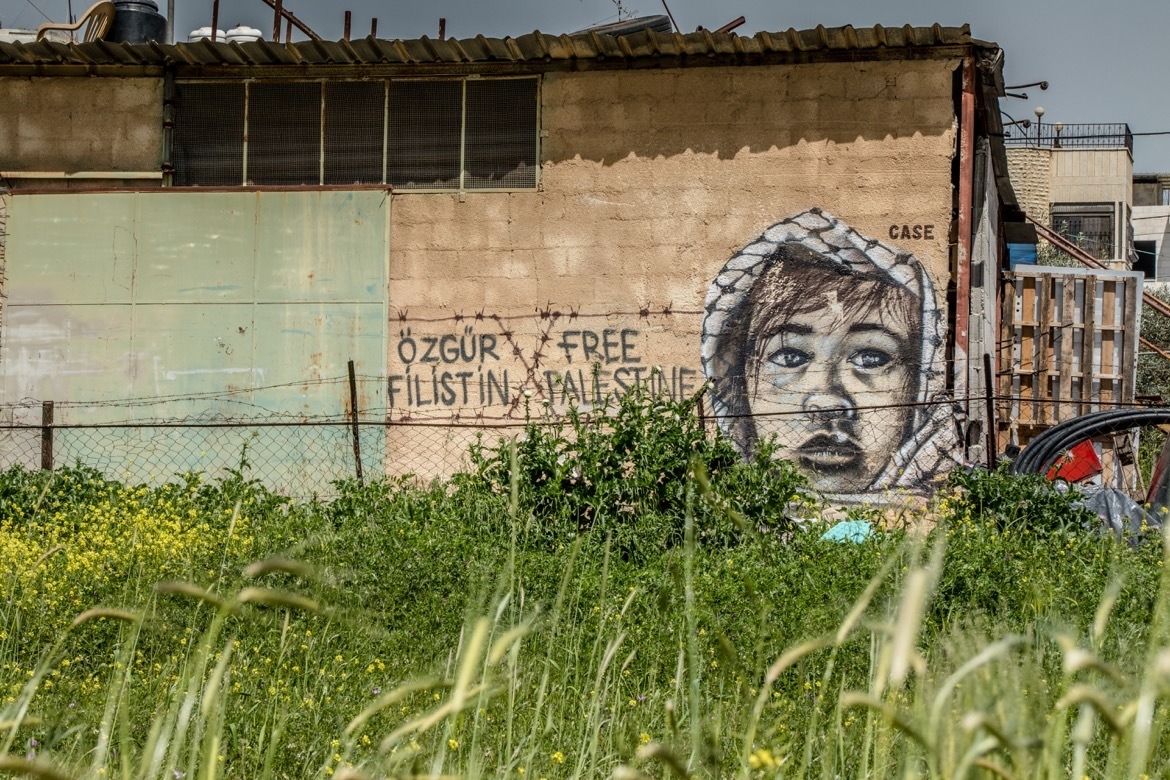
Visitors will quickly learn there is far more to Palestine: besides being the heart of the Holy Land, it’s also home to mouthwatering cuisine, fantastic wines, expansive deserts, centuries-old relics, bedouins, historic cities, and even the famous Dead Sea.
For those planning a trip, here are 10 things to do in Palestine that are guaranteed to give you an authentic, unforgettable experience.
1) Meet the Palestinian people at a homestay or Bedouin camp
One thing is immediately apparent to those who travel to Palestine: the people are incredibly kind, hospitable and proud of their heritage. While it’s easy to strike up a conversation with just about anyone you come across, one of the best ways to see first hand what their day-to-day life is like is to book a homestay.
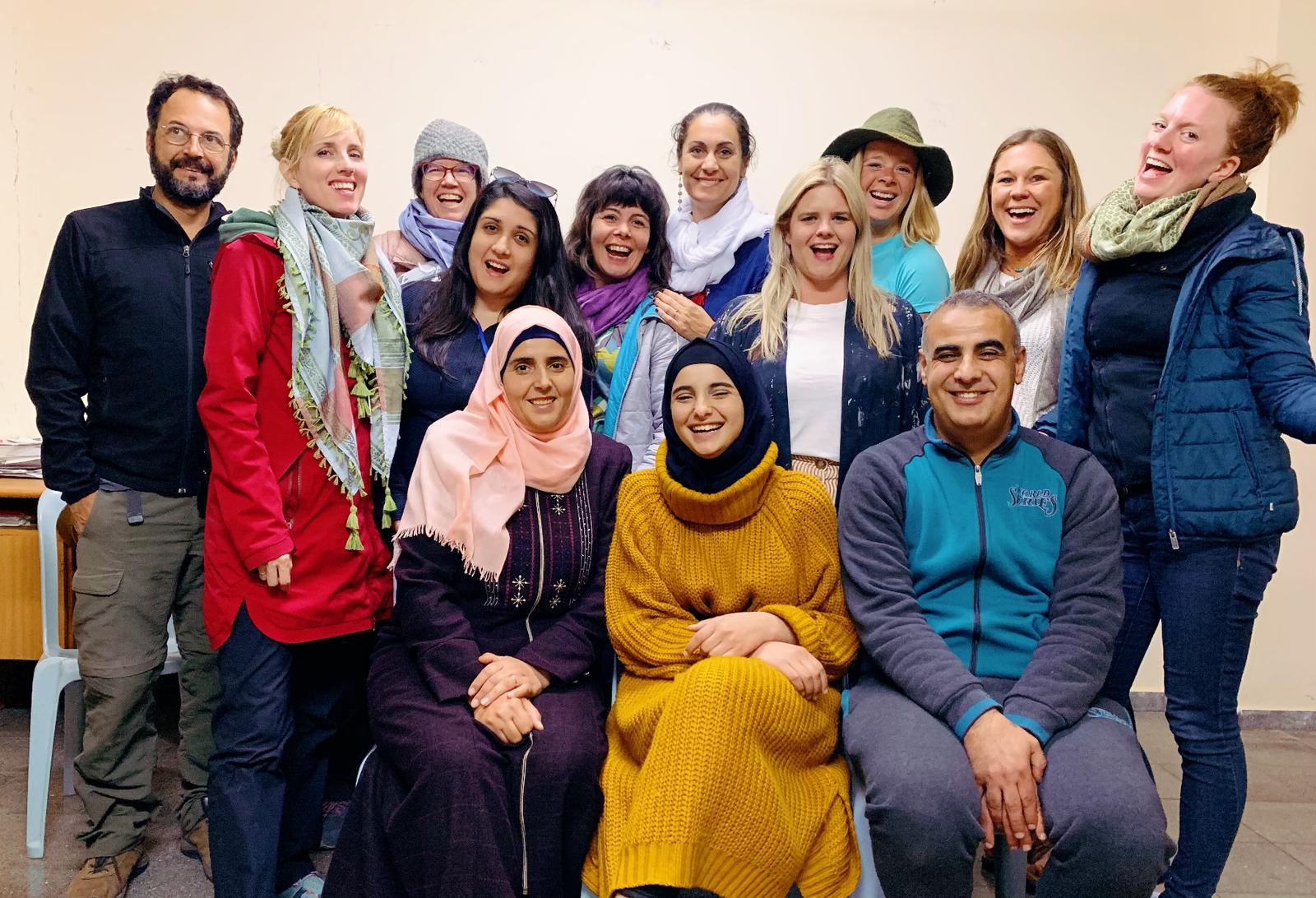
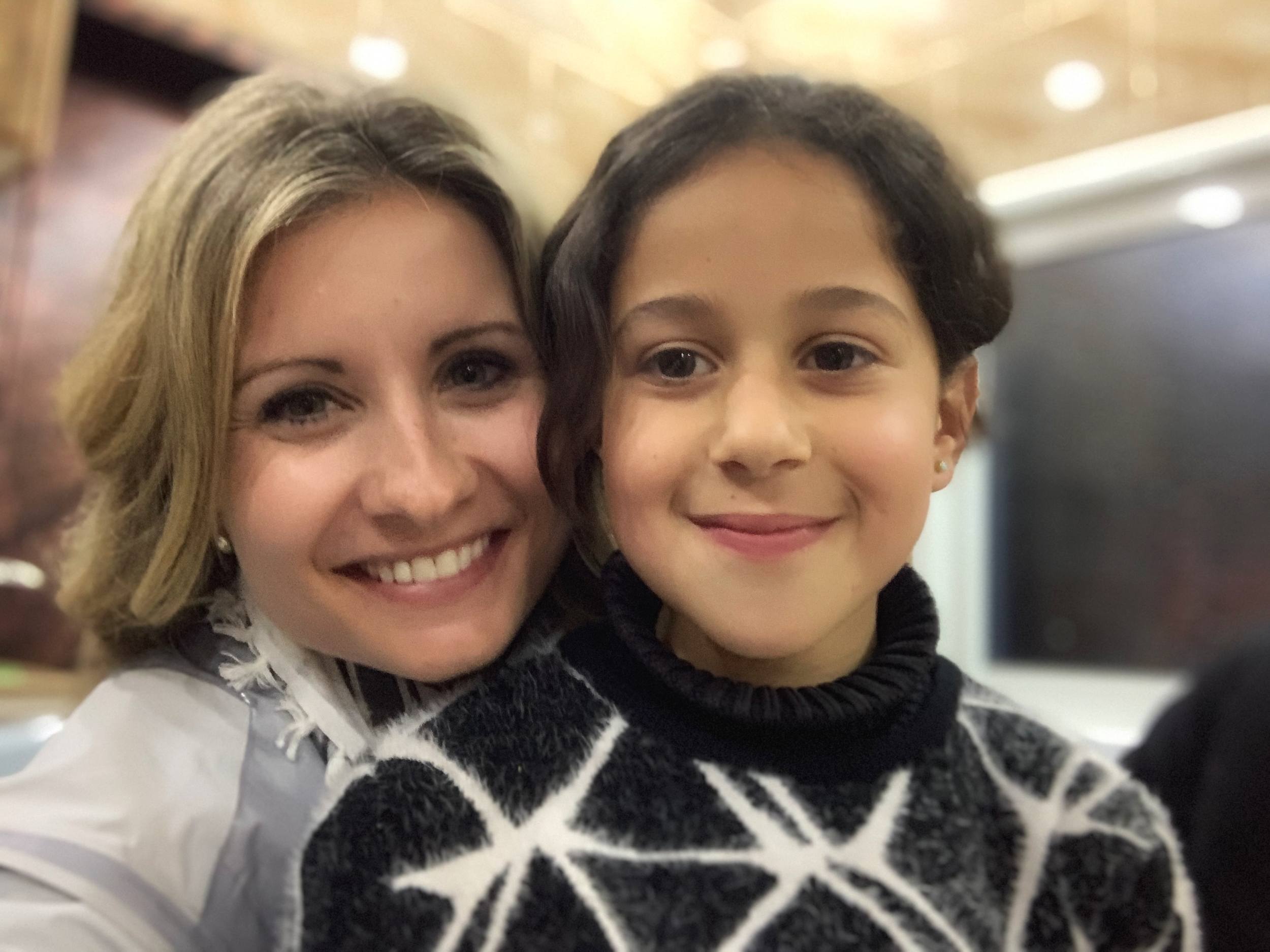
Organizations like the Siraj Center are experts in community-based tourism, and can coordinate overnight visits in a Palestinian home, the opportunity to have a traditional lunch or dinner with a local family, or even stay at a Bedouin camp. Bedouins (which means ‘desert dwellers’ in Arabic) are a fascinating, semi-nomadic people, which guests can learn all about while sharing a meal of mansaf (a lamb, yogurt and rice dish usually eaten with hands) around the campfire, or sipping Bedouin tea which some say is “sweet as love and dark as night.”
Evenings bring performances of traditional Rababa music, guided walks through the arid landscape lit only by a galaxy of bright starts, and pre-dawn wakeups to take a wild 4×4 ride through the unforgiving landscape to make it to the Dead Sea just in time for a glorious sunrise.
Globe Guide tip: Lodging in Bedouin camps is extremely basic: think walls made out of plywood boards, a thin pad and blanket without no sheets or a pillow for bedding, and an outhouse with one sink. Be sure to charge electronic devices ahead of time, as it’s unlikely you’ll find a power outlet.
2) Wander the Old City of Jerusalem
This Old City of Jerusalem might be small, but it has some of the oldest stories in the world to tell. Strolling through the walled town marked by seven strong gates and 37 towers is nothing short of enchanting, particularly at night when street lamps softly illuminate the narrow stone passageways and the golden glow of Temple Mount’s dome shines steadily in the distance.
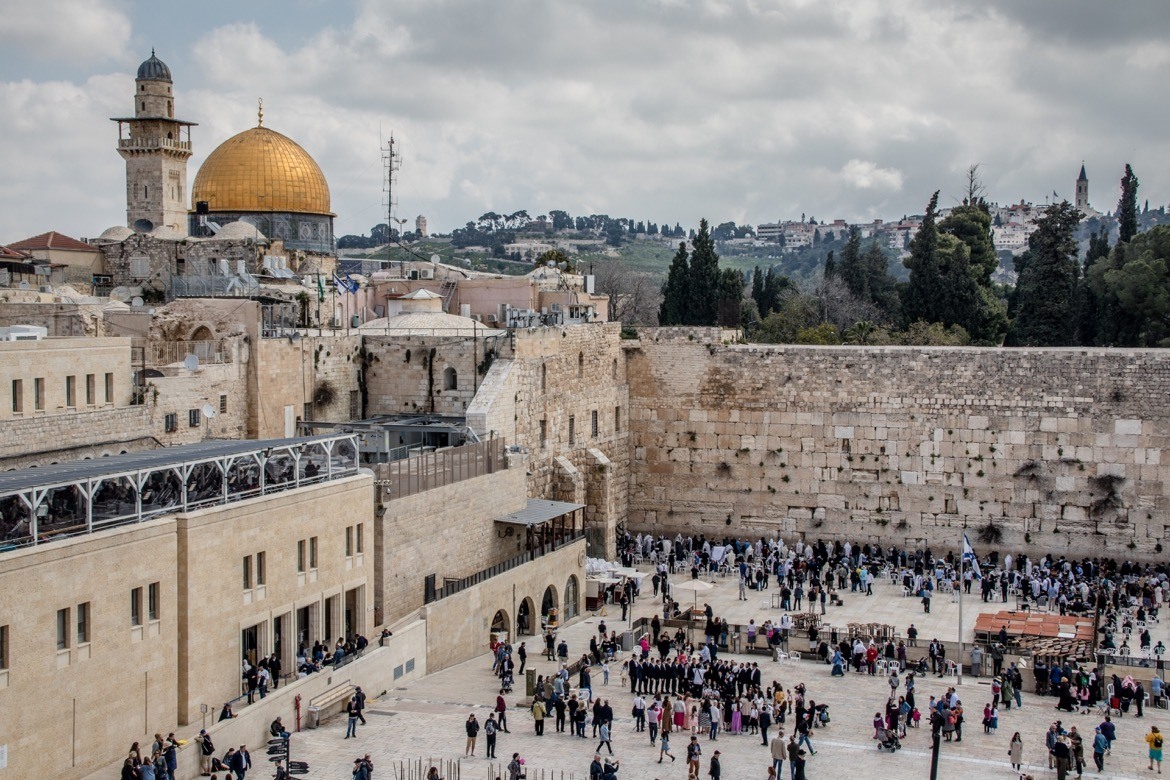
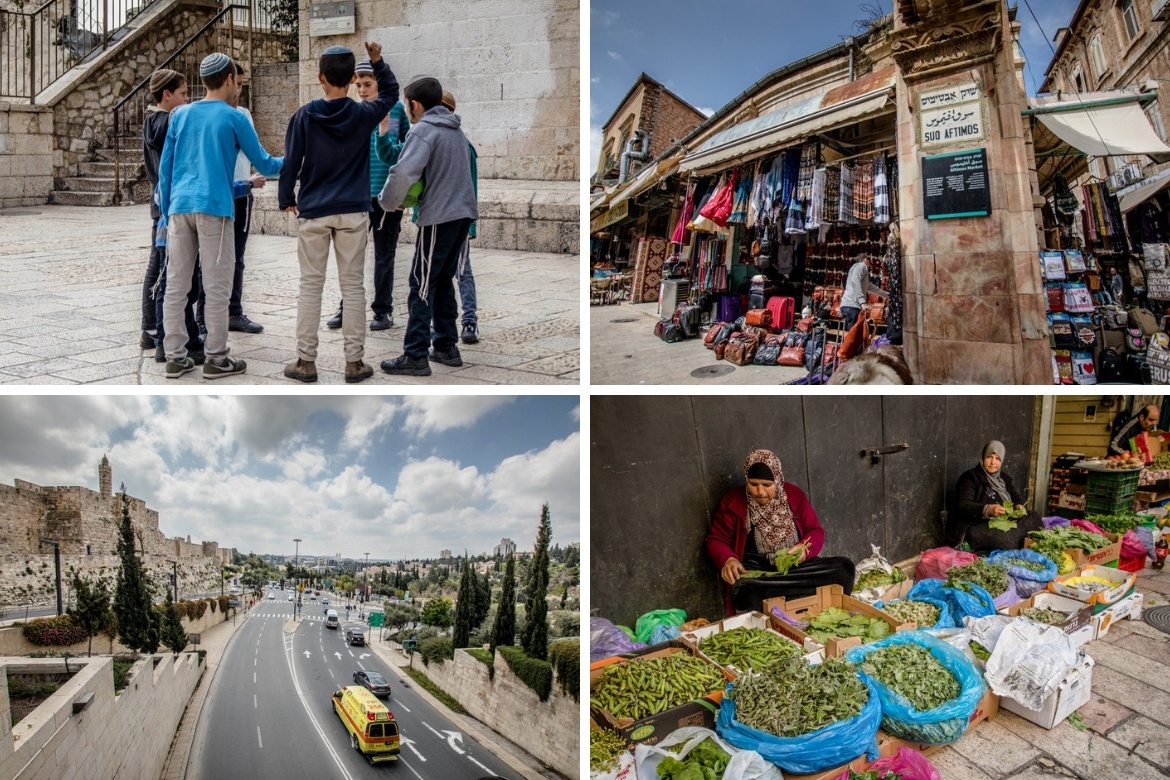
About 15-thousand people call the old city home, which is divided into the Jewish, Muslim, Christian and Armenian quarters. Such diversity makes it a fascinating area to explore, especially the covered markets and souks where the smell of sizzling meat wafts off the grill, stands overflowing with tangy oranges, carrots, ginger and mint serve up fresh-squeezed juices, and traditional wares like handcrafted leather shoes and ornate coffee sets are proudly displayed.
Aside from simply wandering around the old walls and feeling like you’ve been transported back in time, there are few must-see sites when visiting Jerusalem:
- Damascus Gate: Most Jerusalem tours start at this grand entrance marked by stone turrets, which dates back to the 1500s and leads straight into a bustling bazaar.
- Dome of the Rock: This iconic Islamic shrine built on Temple Mount is famous for its glittering golden dome, which has such a lustre it can be seen from as far away as the outskirts of Bethlehem. A holy site for both Jewish people and Muslims, the Dome of the Rock’s walls were built around Mount Moriah where Abraham is said to have offered his son Isaac as a sacrifice, and Muslims believe this is where Mohammed made his ‘Night Journey.’ Note: This site has very specific opening hours for tourists and non-Muslims, closes for many holidays, and only Muslim men are permitted inside for prayers on Friday and Saturdays. Be sure to line up early as queues can be enormous, and double-check admission times before heading over.
- The Western Wall: This stone site is the western support wall of Temple Mount, and is also known as the Wailing Wall. Jewish people gather here to recite prayers, sometimes writing them down on slips of paper that they slide into the wall’s cracks. While men and women have separate sections, the wall is open to everyone all day, every day.
- Church of the Holy Sepulchre: This grand church marks the site of Jesus’ crucifixion, burial and resurrection, and holds the Stone of Anointing where His body is said to have been anointed before burial. There’s also an ornate chapel enclosing the Holy Sepulchre, and the opulent Altar of the Crucifixion.
Click below to book one of these top-rated Jerusalem tours:
Globe Guide tip: Avoid going to Jerusalem on the weekend when Jews observe Shabbat, since nearly everything in the usually lively Jewish Quarter will be closed from around sundown on Friday through Saturday evening.
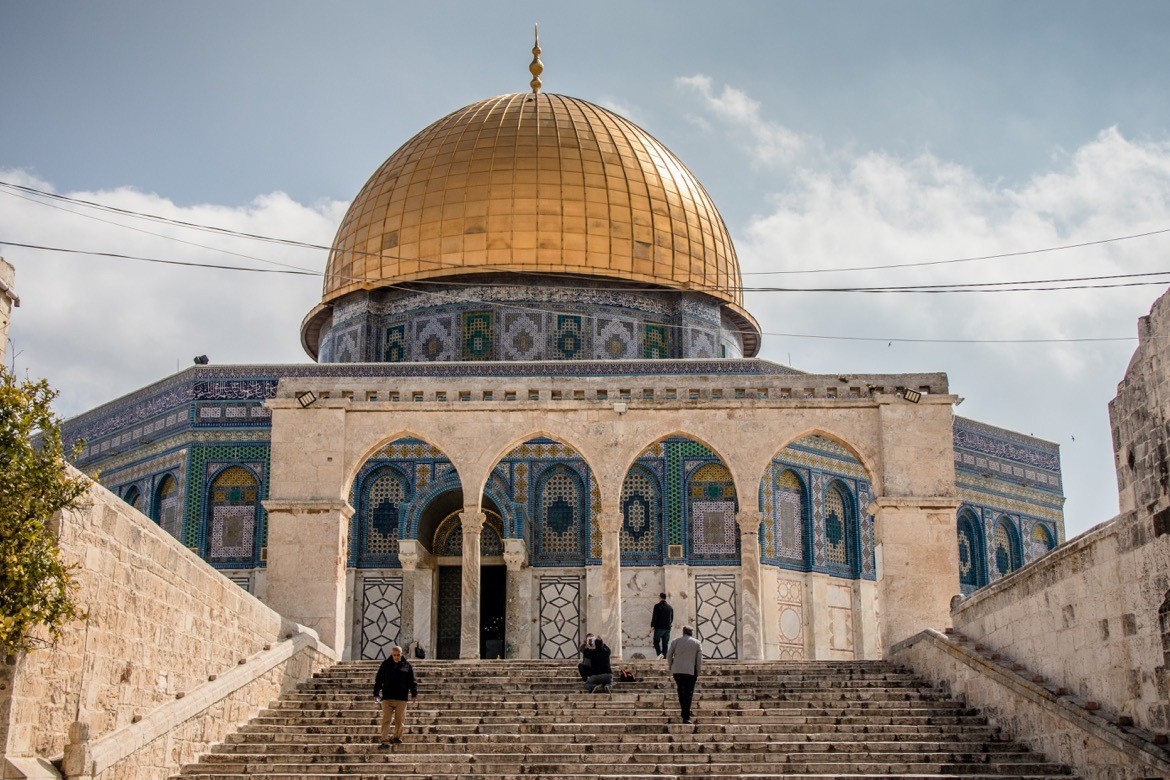
3) Watch a traditional Dabke dance
This spirited dance dates back centuries in Palestinian, Lebanese, Syrian and Jordanian culture, and is traditionally preformed during happy occasions like weddings or festivals. Dabke (which means “stamping of the feet” in Arabic) has some variations, but choreography typically sees a group perform a high-energy combination of circle and line dancing, complete with plenty of half kicks and twirls.
Watch a group in Bethlehem perform a Dabke dance:
4) Explore a monastery
For a hike with some serious wow-factor at the end, tackle the dusty trail that winds through the expansive Kidron Valley. Known for its caves dating back to Byzantine times that were once inhabited by monks, the walk passes by fields of wildflowers and under wide open skies, ending at Mar Saba Monastery which is perched dramatically into the hillside.
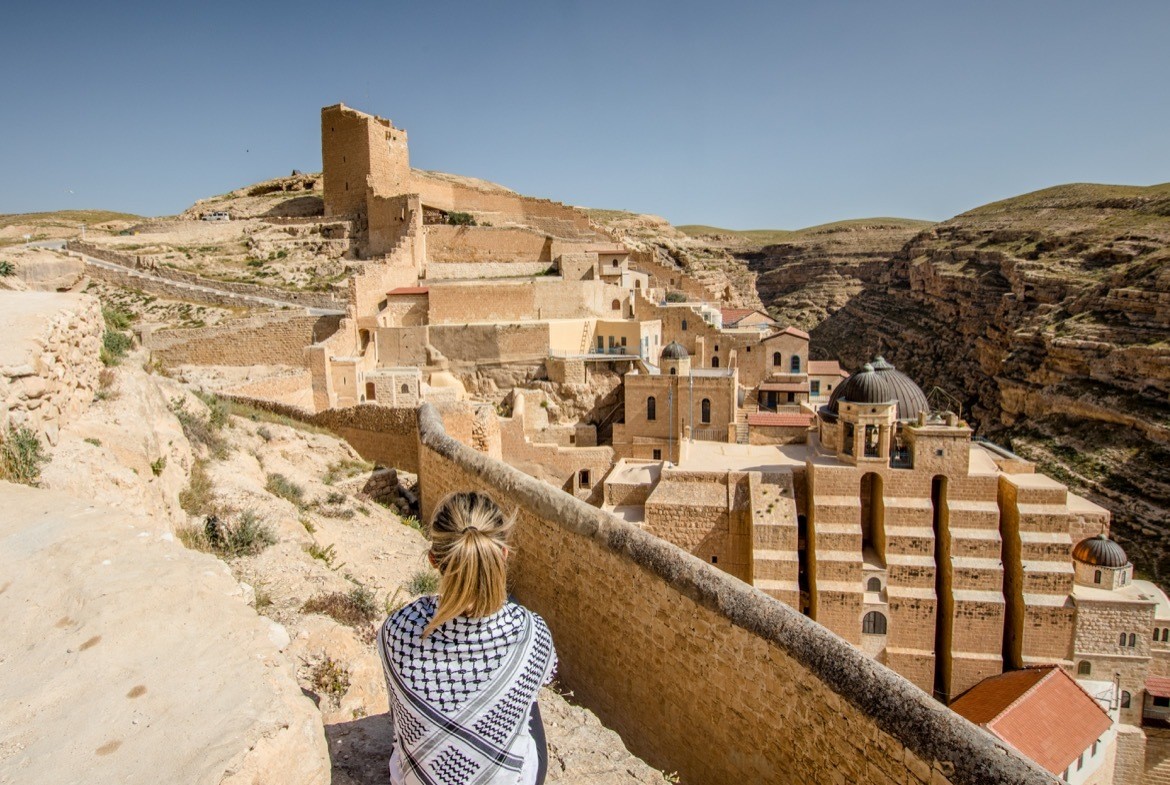
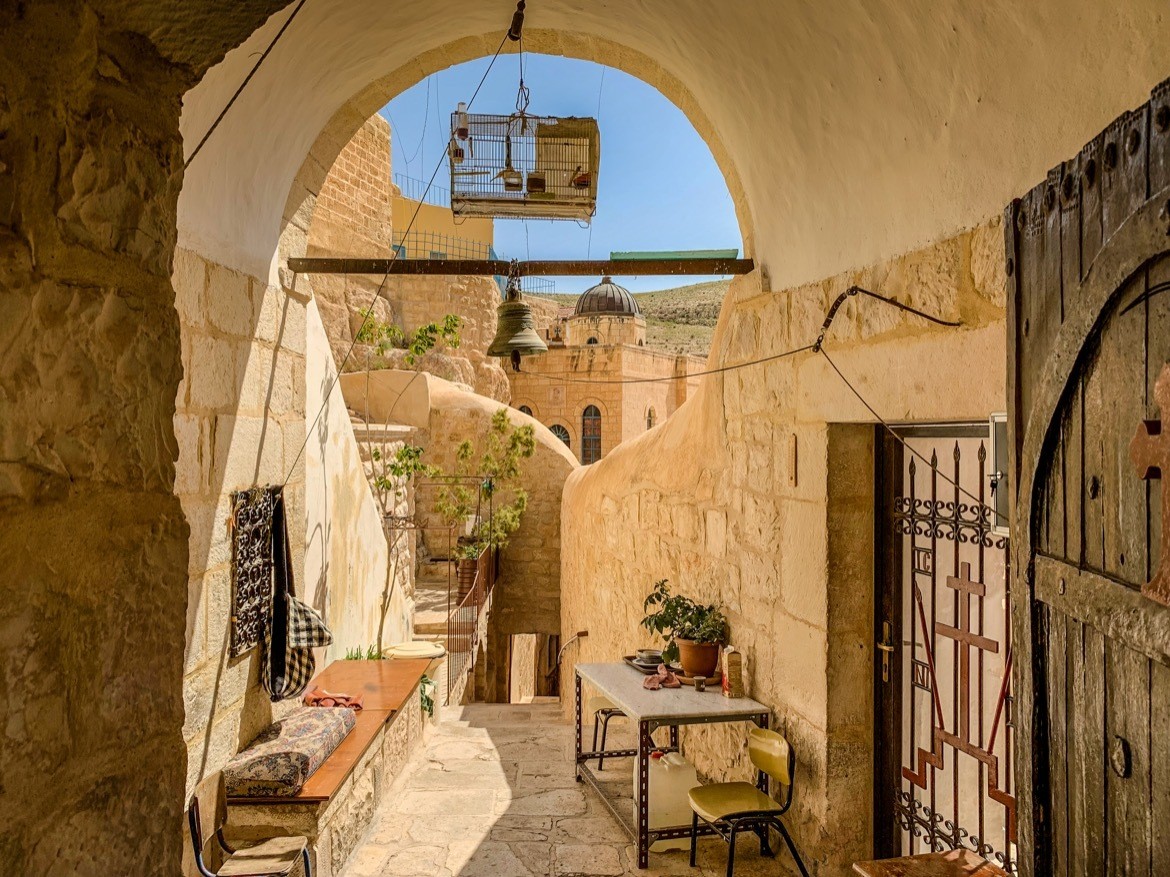
Named for Saint Saba who lived in complete seclusion in a cave across from the site, the complex currently houses over a dozen monks who abide by ancient traditions, including that women are not permitted to enter inside. No matter though: the best views of the monastery are from the trails surrounding it, and no visitors are allowed on Wednesdays or Fridays which are considered fasting days.
Globe Guide tip: Men who visit Mar Saba will want to pick up a bottle of wine on the way out, which is made by the monks!
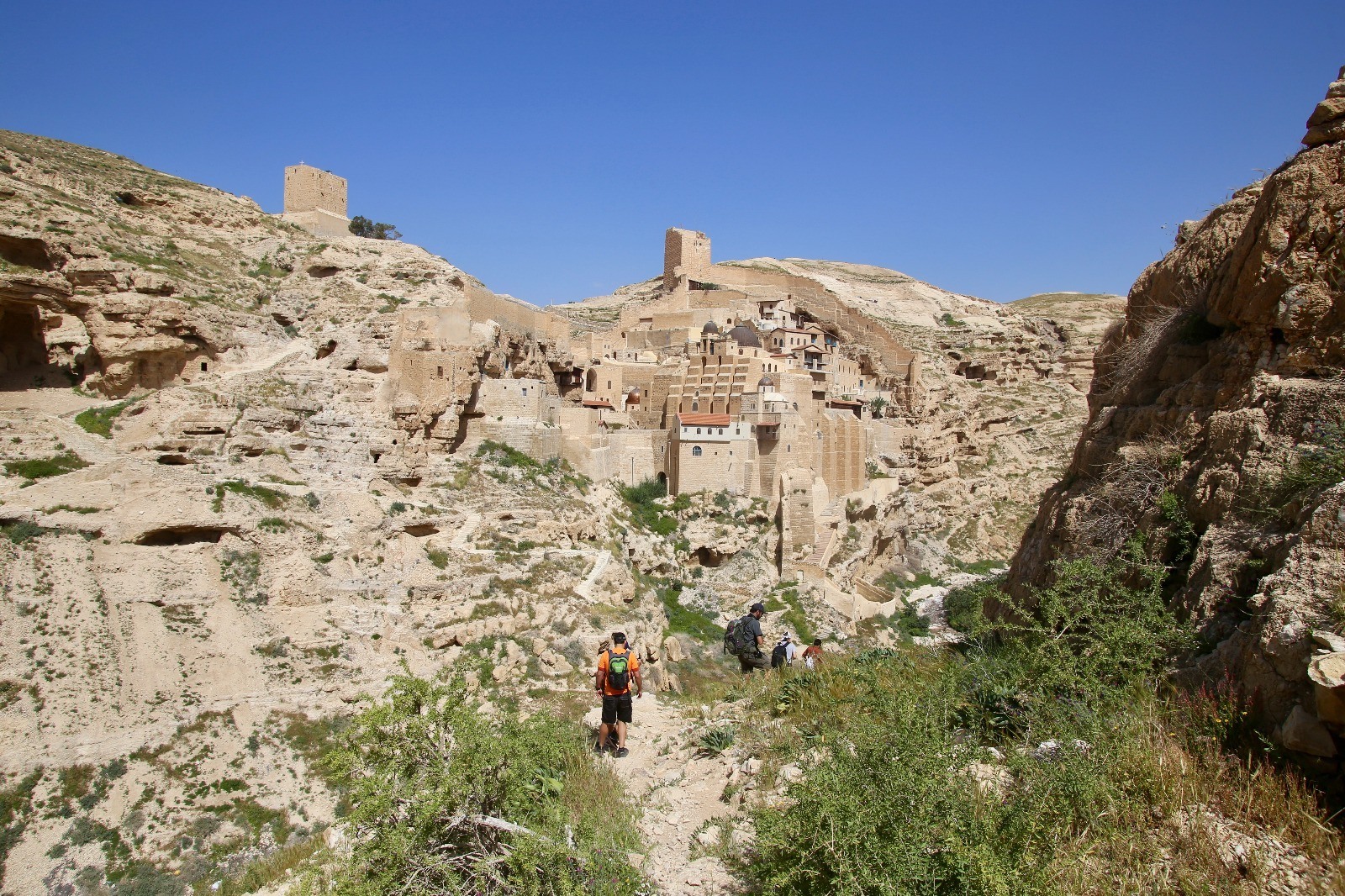
5) Visit the Israeli West Bank Barrier in Bethlehem
To get a sense of what life is really like in Palestine, head to the Israeli West Bank Barrier during your Bethlehem visit, which is just around the corner from the Jacir Palace Hotel.
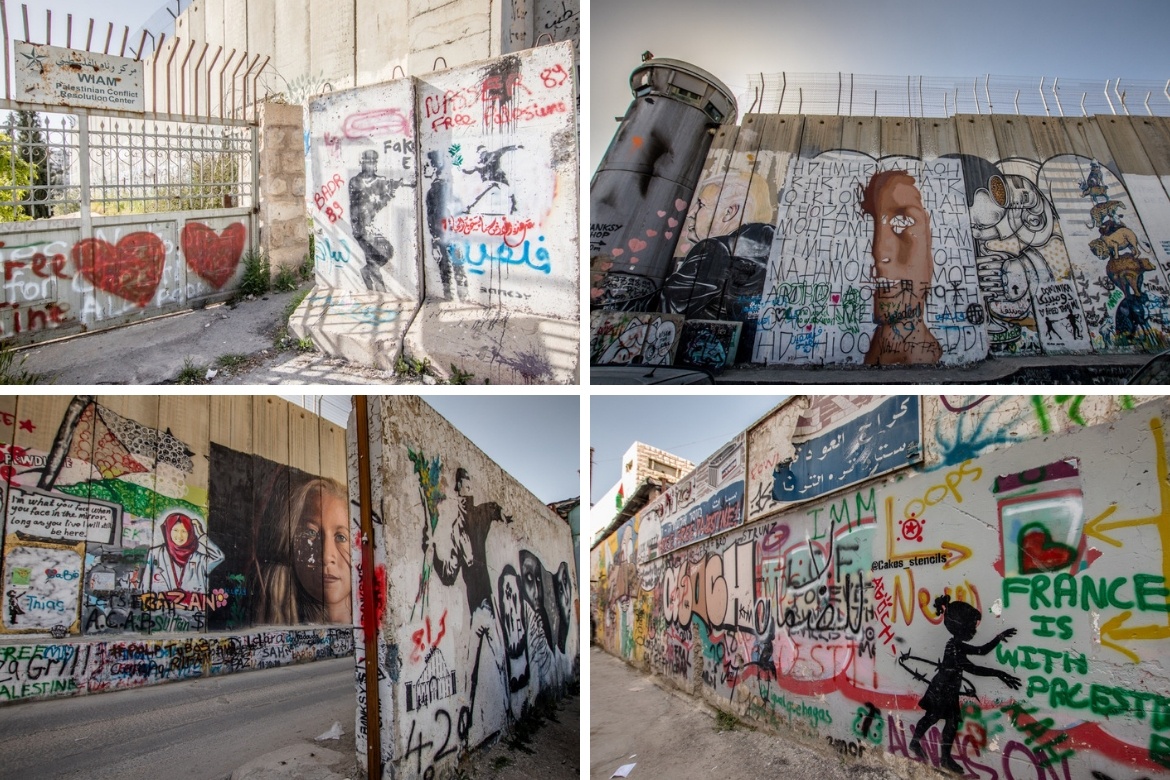
This massive, gritty slab of concrete is just a tiny portion of the wall separating Palestine from Israel, which soars as high as 25 feet in some places and is topped with barbed wire–cutting off Palestinians from the rest of the country, save for those permitted to leave the territory with a special permit.
Israel says it was erected for safety reasons following a rash of Palestinian suicide bombings in Jerusalem that killed more than a thousand Israelis, but despite public outcry and the International Court of Justice declaring it illegal back in 2004 it still stands today.
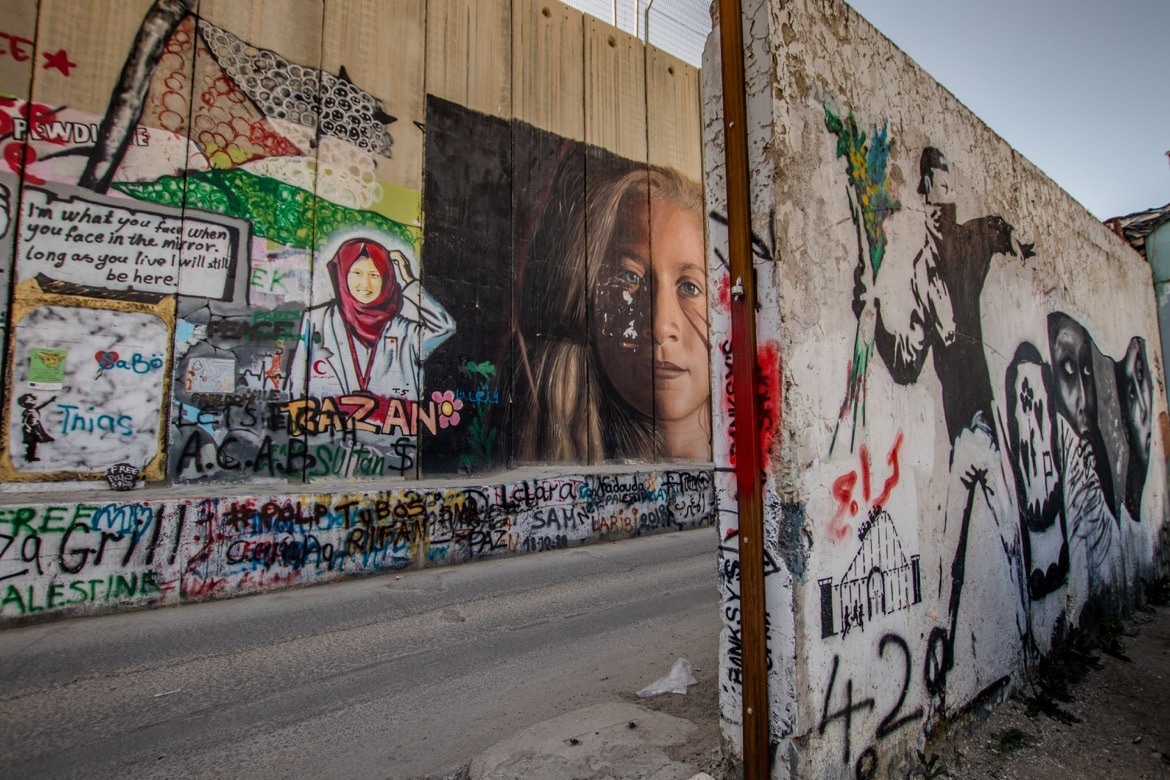
Most of the wall is an ugly, plain grey, but in Bethlehem the separation wall has been transformed into public artwork out of protest, where anyone is welcome to pick up a spray can (there’s even a ‘Wall Mart’ across the street that sells graffiti supplies) and make their mark. The incredible street art depicts the artists’ feelings of oppression, along with messages of peace and hope for a resolution to the conflict.
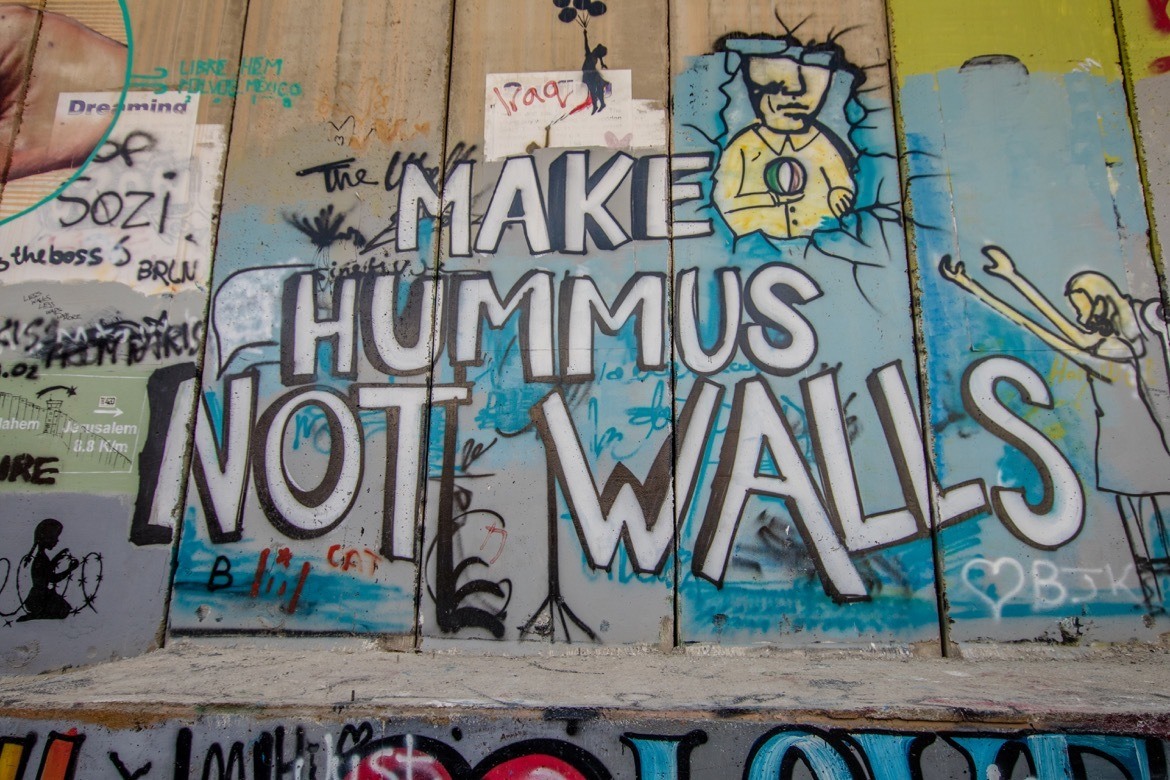
An unforgettable experience in Palestine is booking a room at The Walled Off Hotel. The hotel was started by the famously elusive artist Banksy as a way to demonstrate the reality of life in Palestine, and thanks to the novelty factor of this quirky property it quickly became one of the top things to do in Bethlehem. Rooms look right onto the wall (earning it the moniker of the “worst view in the world”) and touches like large security cameras and art depicting cages and tear gas help guests get a greater awareness about the conflict.
Bunker-style accommodations start at $60 per night, and there are also private rooms and suites that go for anywhere between $200 and $900 per night. Rates include complimentary breakfast, tea and cookies, there’s a gallery displaying Palestinian modern art inside, and Banky prints and souvenirs are available for purchase. Click here to book
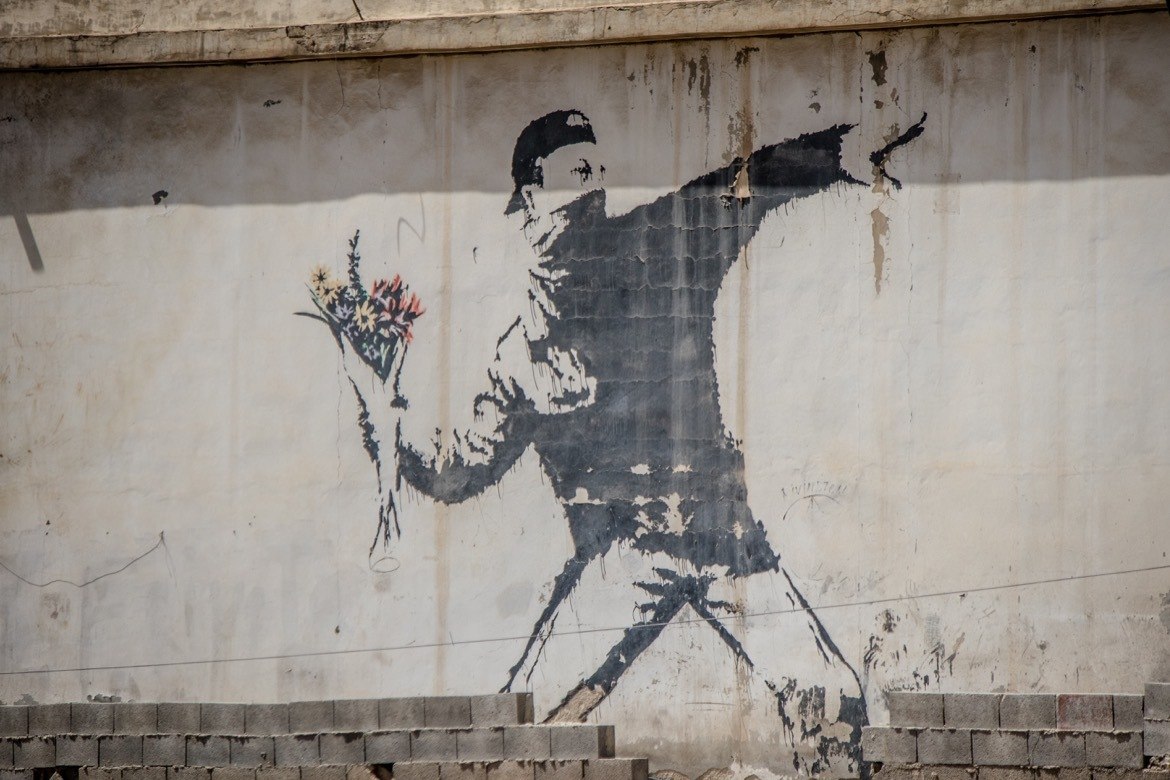
6) Learn about the history of Palestine
With its location in one of the most storied regions on the planet, there’s no shortage of history in Palestine. Take a trip back in time by heading to the city of Jericho, to explore the intricate ruins and mosaic floors of Hisham’s Palace (Qasr Hisham) which was originally built as a winter resort and dates back to 747 AD.
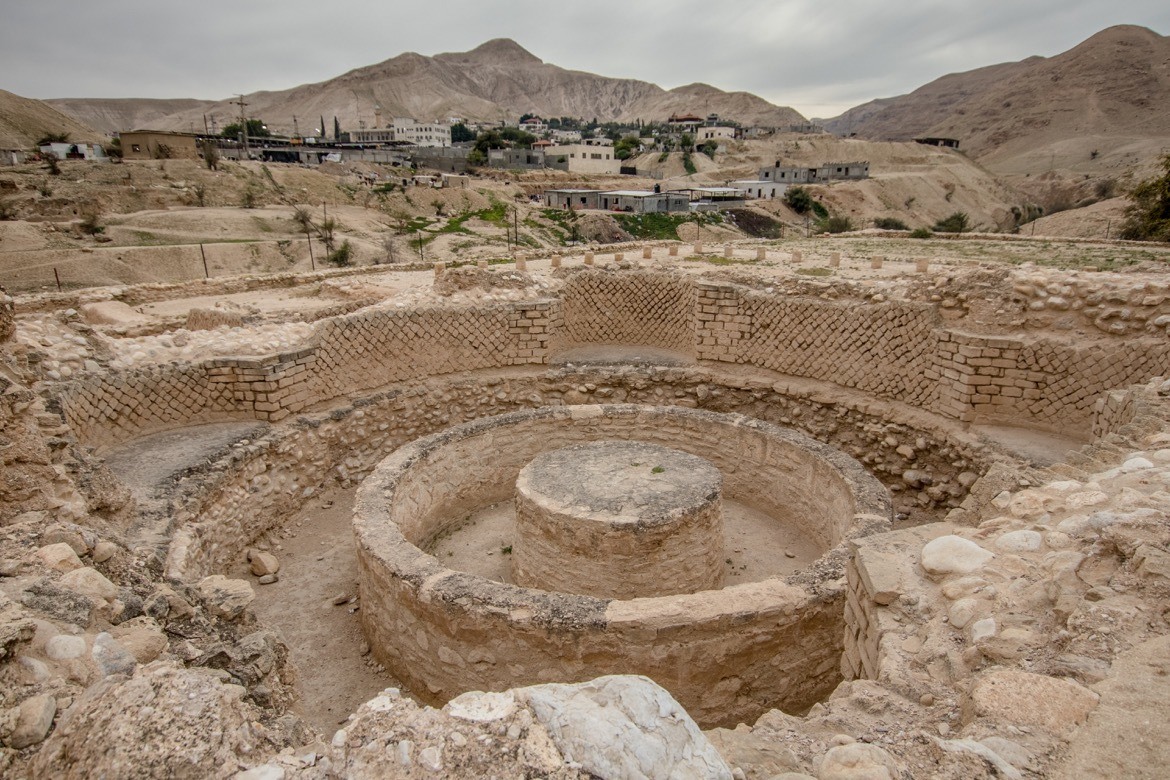
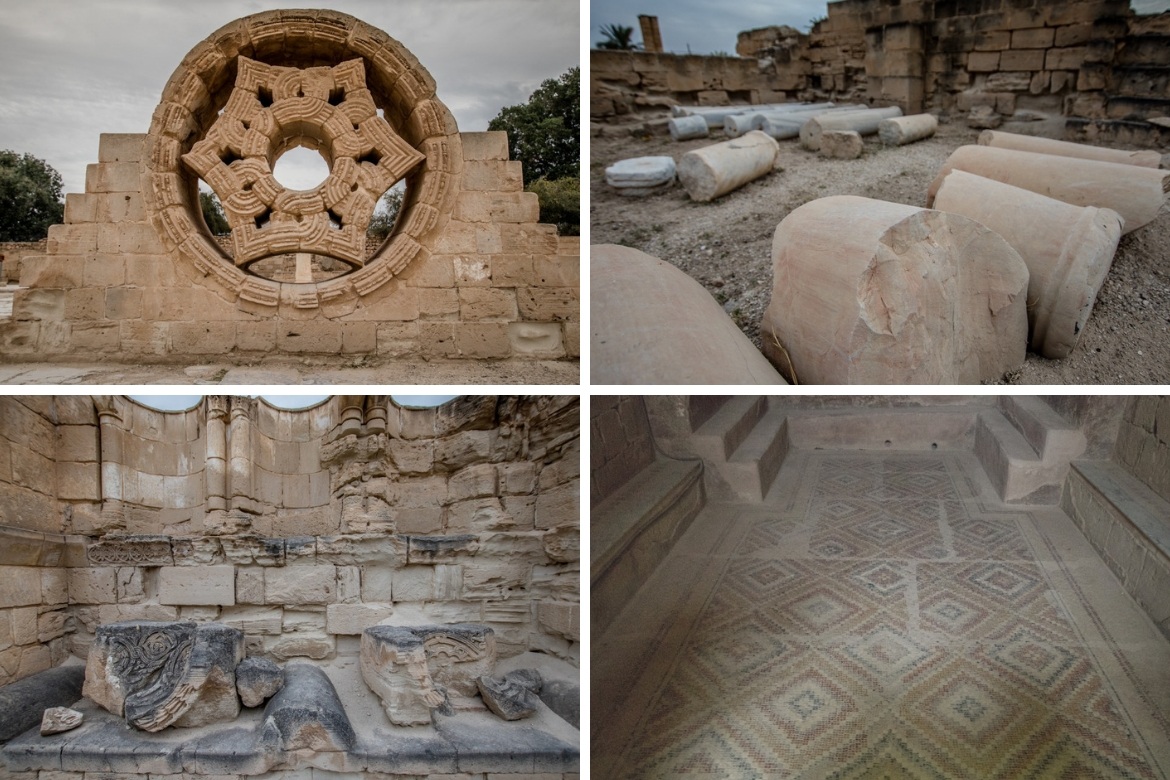
Also in the West Bank, the village of Sebastia (also known as Sabastiya) is a major historical site in the Middle East, and is under consideration as a UNESCO World Heritage Site. Founded around 876 B.C., it was especially significant during the Byzantine period as the home of John the Baptist’s tomb. A shrine, mosque and two churches were eventually added, and visitors are welcome to wander among the ruins today.
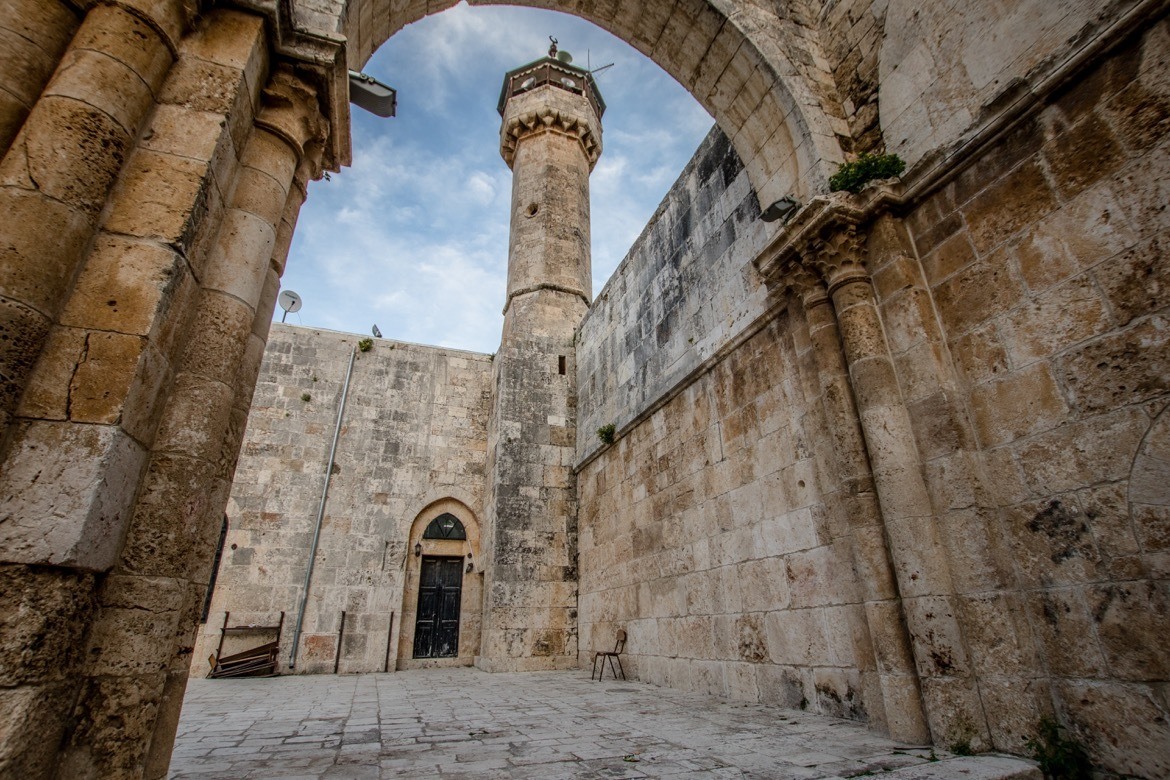
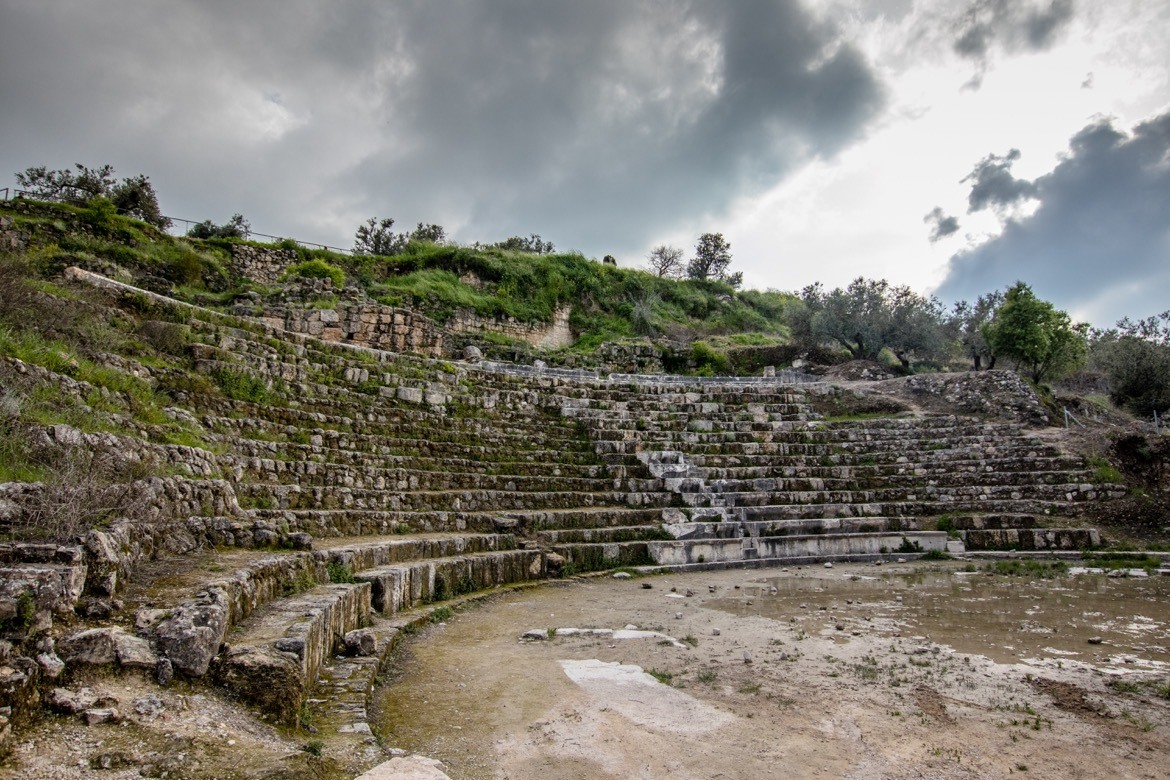
7) Enjoy happy hour in Taybeh
The Middle East is usually one of the last places that comes to mind when talking about alcohol, but that’s not the case in the picturesque Christian village of Taybeh in central Palestine. There, rolling hillsides are covered in so many vineyards you’d be forgiven for thinking you’re in the Napa Valley (be sure to head to the Taybeh Golden Hotel for some wine tasting), and the village is also home to the first brewery in the Middle East, Taybeh Beer.
Founded in 1994, the family-owned operation was started by brothers David and Nadim Khoury who returned to their home village of Taybeh after living abroad in the USA for more than 20 years. Their goal was to boost the local economy by introducing hand-crafted, micro-brewed beer, which is made without any additives or preservatives. Nadim eventually passed his master brewing knowledge on to his daughter Madees, who is now the only female brewer in Palestine.
Globe Guide tip: Try to visit in early October, when Taybeh Beer hosts their annual Taybeh Oktoberfest celebration.
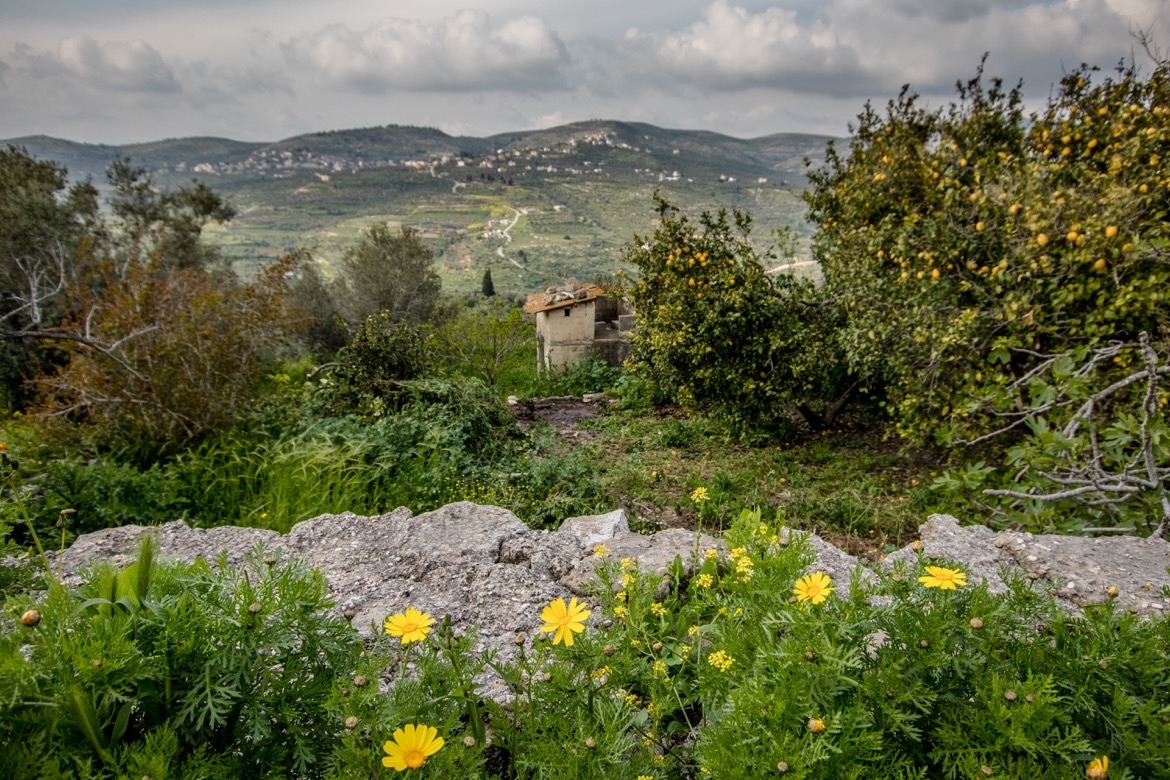
8) Find foodie heaven in Nablus
Along with being one of the largest cities in Palestine, Nablus is also a favourite for foodies. It’s here that you’ll find some of the best traditional dishes which are influenced by both Mediterranean and Middle Eastern cuisine, and sweet Levantine treats like knafeh.
Also known as konafa, this fried cheese dessert sees goat cheese covered with shredded wheat and sugary syrup, topped with crushed pistachios, then deep-fried in a giant, circular pan. In the bustling markets visitors can find some of the most popular food in Palestine, stock up on olive oil and dates, or head over to the Break Spice Shop which has just about every spice imaginable as well as beauty products made from olive oil.
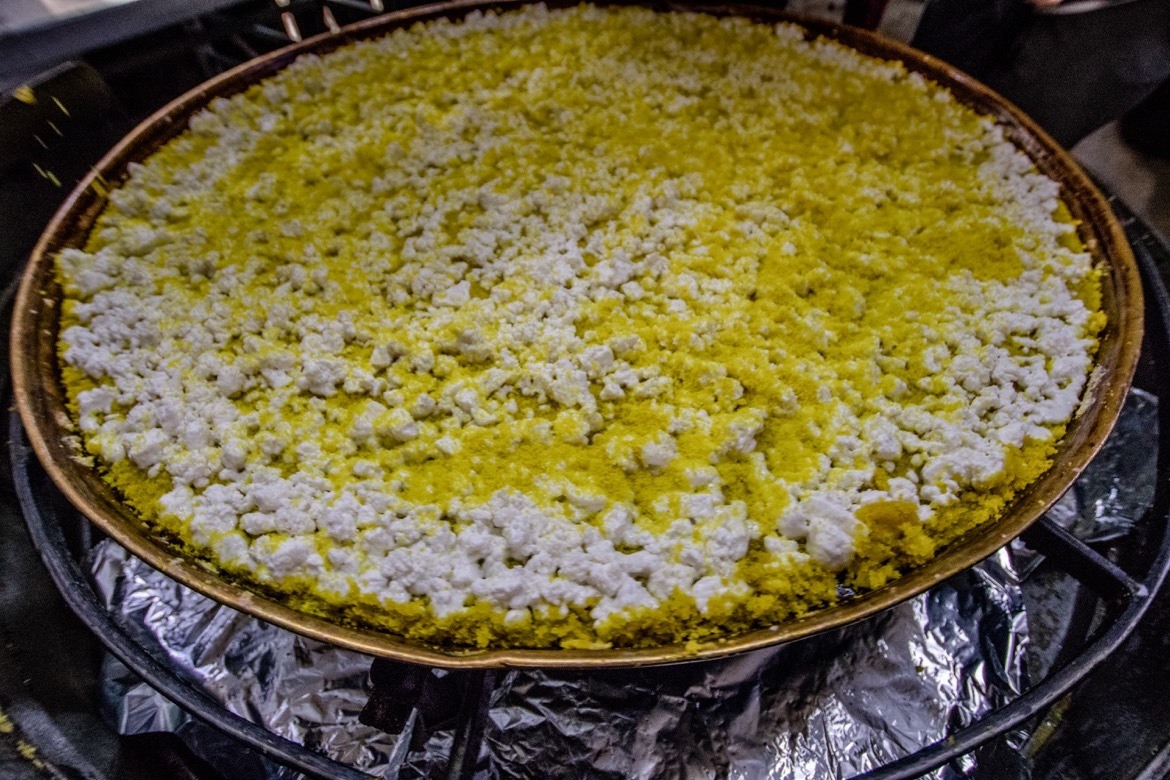
9) Take a hike
A series of walking and hiking trails are emerging in Palestine, following the same routes that caravans once used to exchange goods.
There are three main areas: the Jordan Valley, the Central Route, and Via Maris which connect bedouin camps, valleys bursting with wildflowers, thick olive groves, arid desert landscapes and hillside shrines. While independent hiking in Palestine is possible, a better way to do it is by booking a guided expedition through an organization like the Siraj Center which offers a variety of days-long itineraries.
Options include the Masar Ibrahim trail which starts in Nablus and ends in Taybeh, or the 10-day Nativity Tail which traces the path that Mary and Joseph took from Nazareth to Bethlehem, with lessons about the surrounding flora and fauna and stops in villagers’ houses along the way.
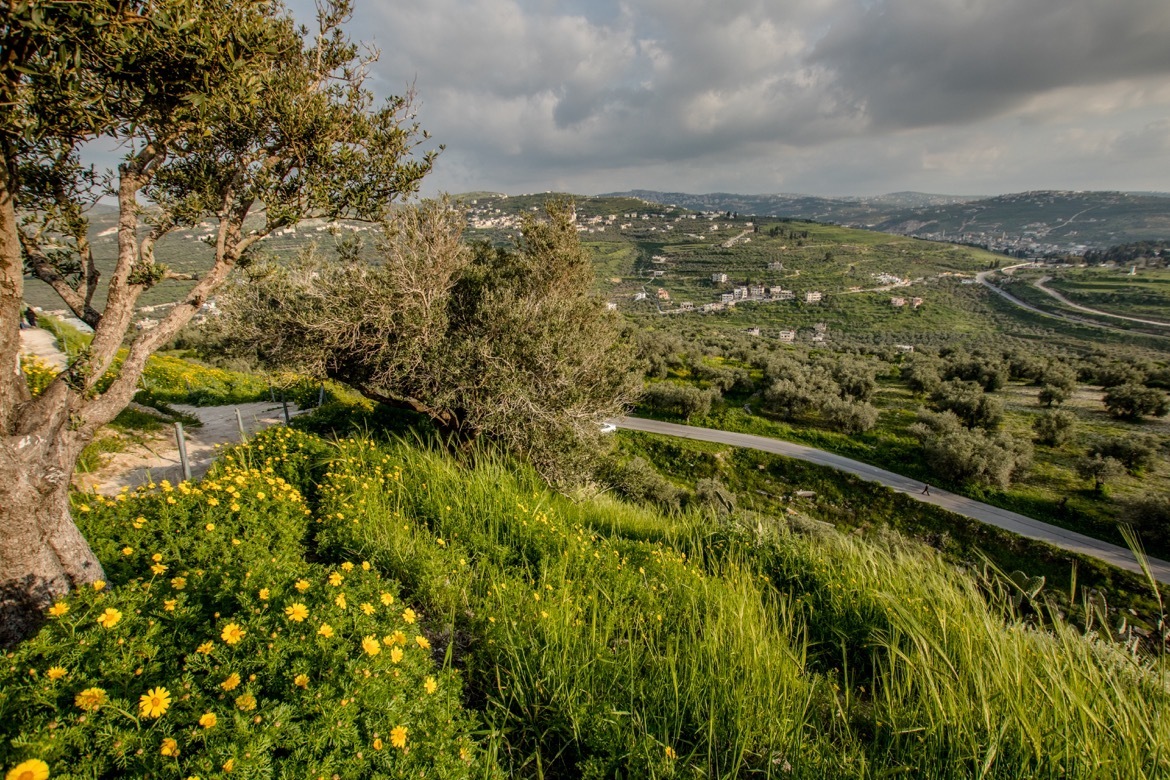
10) Go swimming in the Dead Sea
Cap off your trip to Palestine with a dip in the Dead Sea, which is one of the Middle East’s most famous attractions for good reason. Not only is it the lowest place on earth at 400 metres below sea level, but the water’s high salinity means people are able to float without even trying–it’s basically the next best thing to being in outer space!
READ MORE: The do’s and don’ts of swimming in the Dead Sea
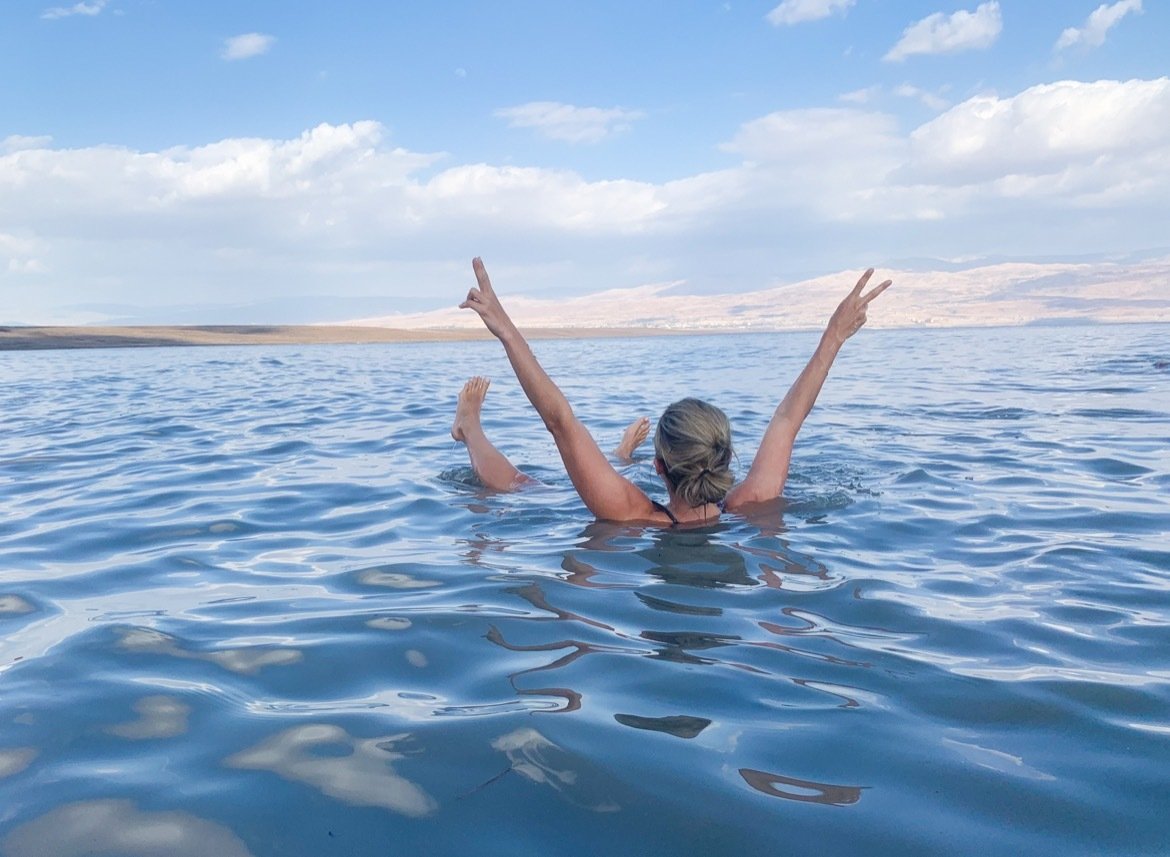
Dead Sea minerals like sodium, potassium and magnesium also have incredible healing properties, and slathering yourself in mud is sure to do wonders for your skin. Go for a salty swim at one of the Dead Sea beaches, then coat yourself in the warm, thick mud found around the shoreline and let it dry before rinsing off: your smooth, baby-soft skin will thank you!
Click here to book a Dead Sea tour:
Hotels in Palestine:
- Notre Dame Guest House: Located just steps away from Damascus Gate in Jerusalem, this gorgeous property will make you feel like royalty walking through castle walls. The 19th-century guesthouse is owned by the Vatican and offers daily mass inside its chapel. The rooftop patio has fantastic views over the old city, and guests love the spacious rooms, which makes it a great base for a Palestine trip. Click here to book
- Taybeh Golden Hotel: This hotel is nestled among the vineyards and also has an adjoining tasting room, which gives this property a ‘weekend getaway’ vibe. Click here to book
- Jacir Palace Hotel: This Palestine hotel lives up to its name, with an opulent, grand entrance that sets the tone for the rest of the property. Located in Bethlehem, the property is actually a palace that dates back more than a century, making it a popular spot for wedding celebrations and luxury stays. Rooms are very large, and the hotel is close to sites like Church of the Nativity and Banksy artwork. Click here to book
Important note about travel in Palestine:
The conflict between Israel and Palestine has been happening for decades, and is constantly in flux which can lead to high tensions or dangerous situations in the area. Tourists taking part in one of the organized Palestine trips or an excursion to cities like Jerusalem and Bethlehem typically won’t encounter any violence or issues, but travelling unaccompanied into settlements or areas like the Gaza Strip or West Bank is not recommended.
Travellers should exercise caution at all times, particularly around demonstrations and signs of police or military activity. In the event an air raid siren goes off, the concrete stairwells found in hotels are typically the safest place to go.
Globe Guide explored Palestine as a guest of the Palestine Ministry of Tourism & Antiquities. As always, hosts have no editorial influence on articles.
YOU MIGHT ALSO ENJOY:
- The ultimate guide to the best day trips from Tel Aviv, Israel
- Things to do in Amman, Jordan (before a more epic adventure)
- The perfect Tel Aviv itinerary: A guide to Israel’s most vibrant city
SHARE THE PINSPIRATION! CLICK THE IMAGES BELOW TO PIN:
This post may contain affiliate links, which Globe Guide receives compensation for at no additional cost to you.

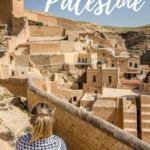
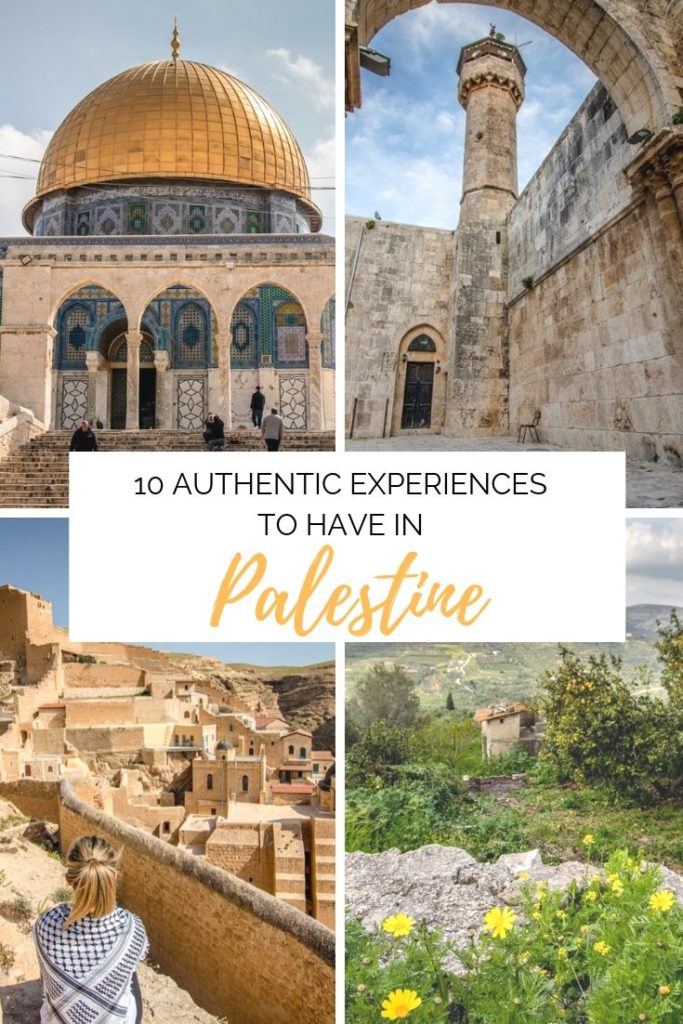
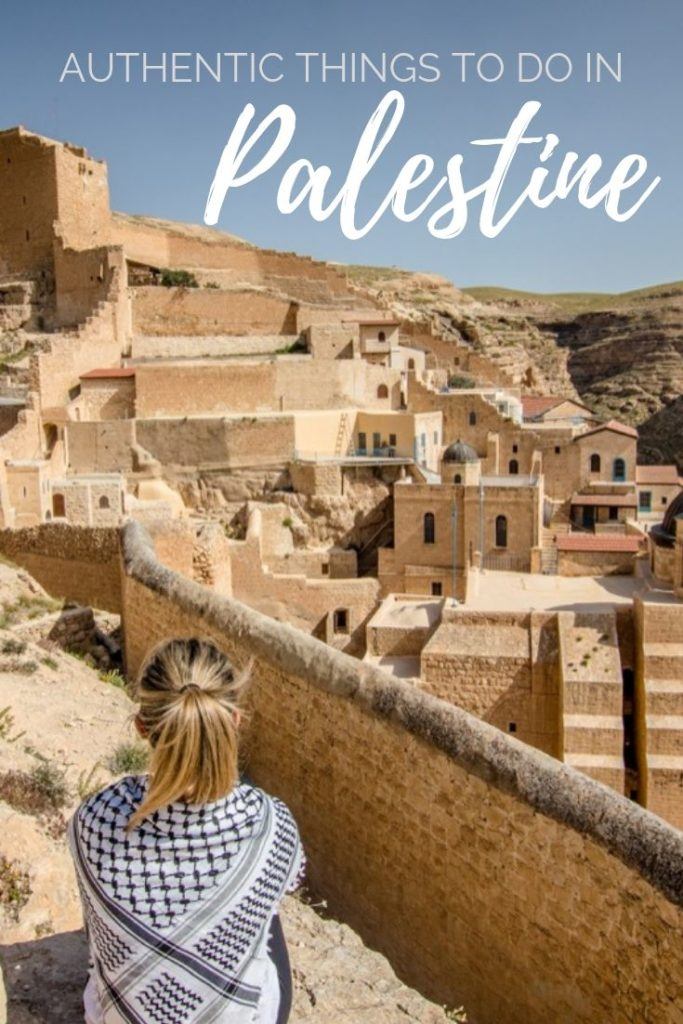
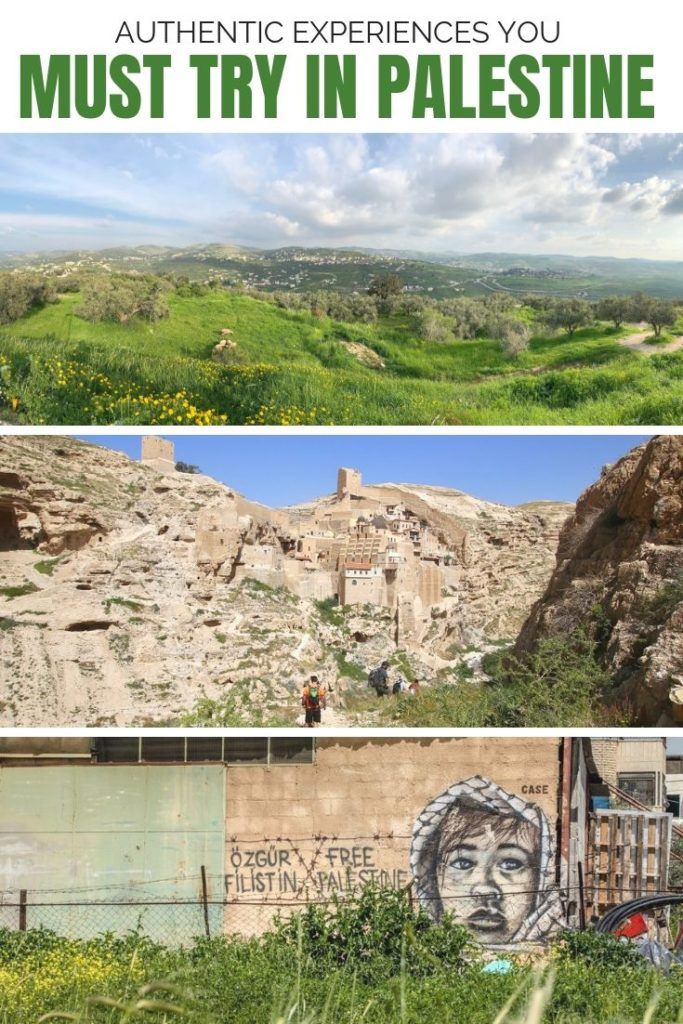
It’s called Israel as no country called Palestine exists.
But you knew that already, so your either politically motivated or trying to reach some misguided, naive travelled (with money).
Shame
It’s Palestine!!
There’s no country, never was a country and never will be a country called palestine. Your’e damned Jew hating filth. Incidently, I’m not Jewish. So if you imagine a person needs to be Jewish to love ISRAEL, then think again losers. 🙂
Well, logicly it’s the opposite Israel invaded palestine which already lived in peace and then comited many war crimes against palestinian villagers and after stealing the land the israilis are trying to steal the culture as well and tried to hide as many relics that proved that belongs to Palestinians (christian or muslim)
There was no country called “Palestine”- it was the name of a huge region but there was no such country. Israel doesn’t have to steal any culture, Jews existed way before Mohammad, if any then Muslims are those who copyrighted the Old testament. Also, which war crimes? Israel provides Palestine with water and electricity, really reminds me when those poor SOBs decided to bomb Israel but actually hit their own electricity cords and left all Gaza strip without power, then cried to the media big bad Israelis mistreat them. That was a laugh. Do you believe everything that they write in the media? Maybe actually come to the region and see for yourself?
Both of my parents were born in Palestine. My passport says mother and father’s birthdplace: Palestine. Not west bank. Not Israel. Palestine.
Yes, there is a country named Palestine and it always was and will always be. Don’t understand why the above people are denying and lying.
It is beautiful country called Palestine not Israel as you say. People are so beautiful and they are unaware of the beauty of there country. I will visit again.
My family and I visited in November and found it breathtaking. The people were lovely. I can’t wait to get back.
Very cool! Which areas did you visit?
Okay author, while telling about the marvelous Palestine, you should’ve at least tell the unsuspecting (and uneducated) readers that it is divided to two parts- Gaza Strip and Betlehem and surroundings.
Gaza Strip is crazy dangerous, Betlehem less so. Also, if you are posting pics made from Israel (there’s literally no way Jews could pray on the Palestinian side of the wall) you should state it, otherwise it’s poor journalism.
Most of what you’ve shown you can find in Israel, in fact Israel doesn’t showcase the wall as an interesting place because they actually have other places to go.
Also, loved the graffiti of the “peace fighter” throwing a bouquet of flowers, now it’s time for you to drive by those territories on the Israeli side, see all the “hospitality” and burning.. umm.. bouquets, yeah, bouquets 😉
Half of this places are in Israel and belong to Israel, like the Dead Sea , Jerusalem etc…. so this article is very misleading to people that will take this trip because they will have to cross borders so many times or maybe won’t be able to enter.
Very nice article, but you forget to prevent about the airport in Tel Aviv, the staff there is quite rude, the luggage check is exhaustive and always took something from you, the size of allowed liquids is different from the rest of the world. This is in the way out
You’re right, that airport is a total nightmare to get through!
Great article, thank you!